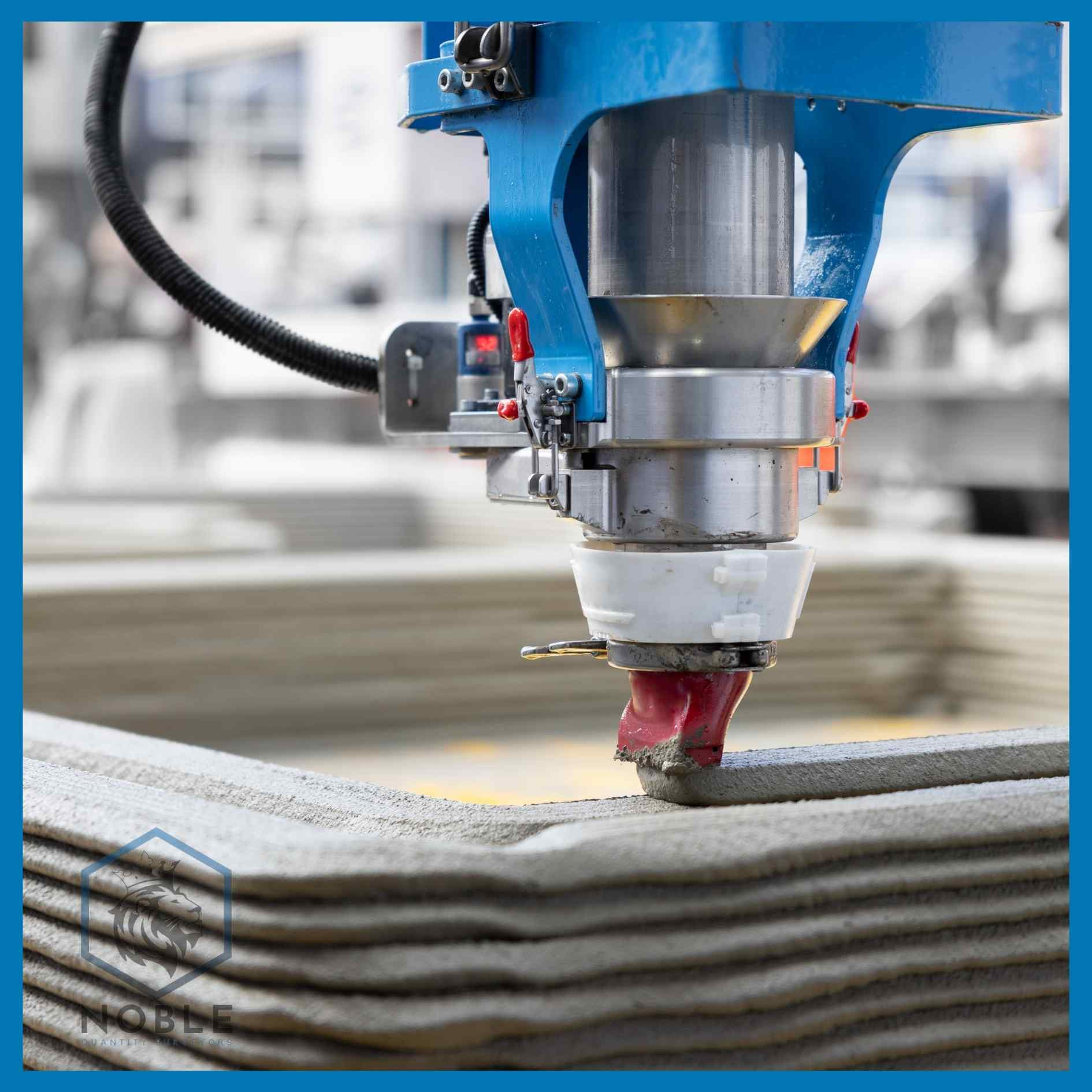Hi, Chat with us on WhatsApp.

3D printing has emerged as a revolutionary force in the
ever-changing landscape of construction technology, transforming traditional
techniques to building structures. These innovative devices, commonly referred
to as "construction 3D printers," have ushered in a new era of
efficiency, sustainability, and design flexibility in the construction sector.
This blog investigates how 3D printing technology is used in building and the
numerous advantages it provides to construction organisations.
A Construction 3D Printing project begins with a detailed 3D digital model of the proposed structure. This model is then virtually split into layers, each of which represents a section of the eventual structure. Following that, a specialised printing robot or gantry system deposits material layer by layer along a pre-programmed path. The printing process, whether employing concrete, metal, or polymers, results in the gradual development of a 3D structure. A robotic arm extruding concrete, powder binding for solidification, and additive welding were all shown in the construction of a working metal bridge in Amsterdam.
Applications
of 3D Printing in Construction
The capacity of 3D printing technology in construction to produce houses, workplaces, and other structures exemplifies its adaptability. Because of the precision and versatility of this method, customised components adapted to individual project requirements can be created. 3D printing gives for unequalled creative versatility, whether for elaborate motifs or streamlined constructions.
Benefits for Construction Companies
Design Flexibility
3D printing empowers construction companies with the ability to tailor parts and components to the unique specifications of each project. This level of customization enhances design flexibility and functionality, opening doors to creative and innovative architectural solutions.
Waste Reduction and Sustainability
By utilizing only the necessary amount of material required for construction, 3D printing significantly reduces waste. This not only leads to cost savings but also aligns with the growing emphasis on sustainable construction practices, contributing to a greener and more environmentally friendly industry.
Speed and Efficiency
The on-site production of components through 3D printing expedites the construction process. Rapid creation of parts ensures faster project completion, offering a competitive edge to construction companies in terms of timelines and project delivery.
Enhanced Safety
3D printing minimizes the need for workers to engage in hazardous tasks, improving overall job site safety. Automation and precision in the printing process reduce human intervention in potentially risky activities.
Long-Term Cost Savings
While the initial investment in 3D printing technology may be substantial, its efficiency and the subsequent advantages in waste reduction, speed, and safety lead to significant cost savings over the equipment's lifetime.
Finally, 3D printing technology is a revolutionary force in
the building business, not just a trend. Its applications, ranging from
customised designs to sustainable construction techniques, position it as a
possible solution to construction organisations' issues. As technology
advances, the use of 3D printing is poised to transform the future of
construction by providing a blend of efficiency, sustainability, and inventive
design options.
0 Comments